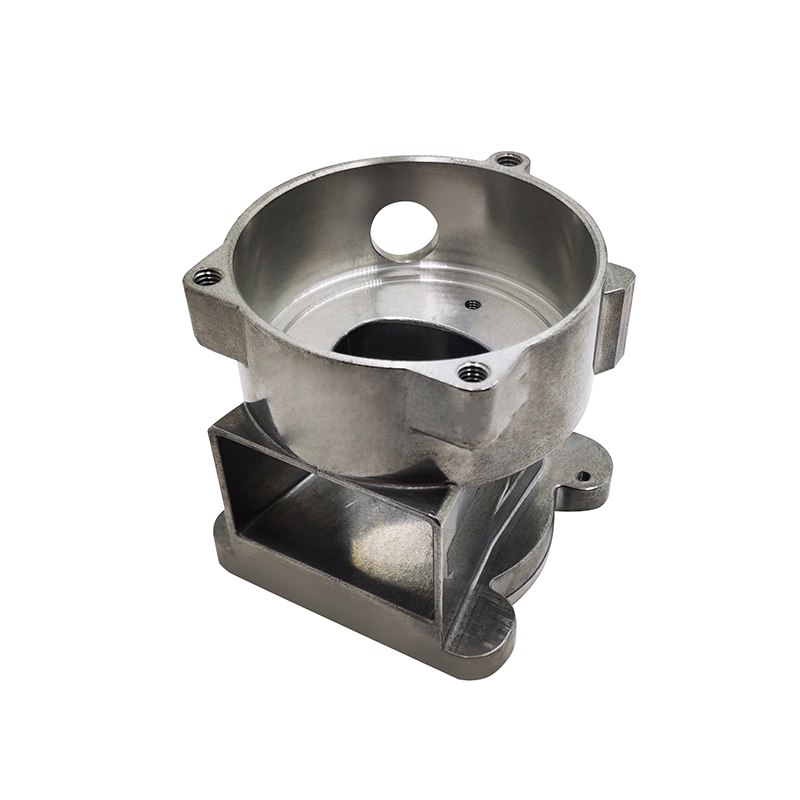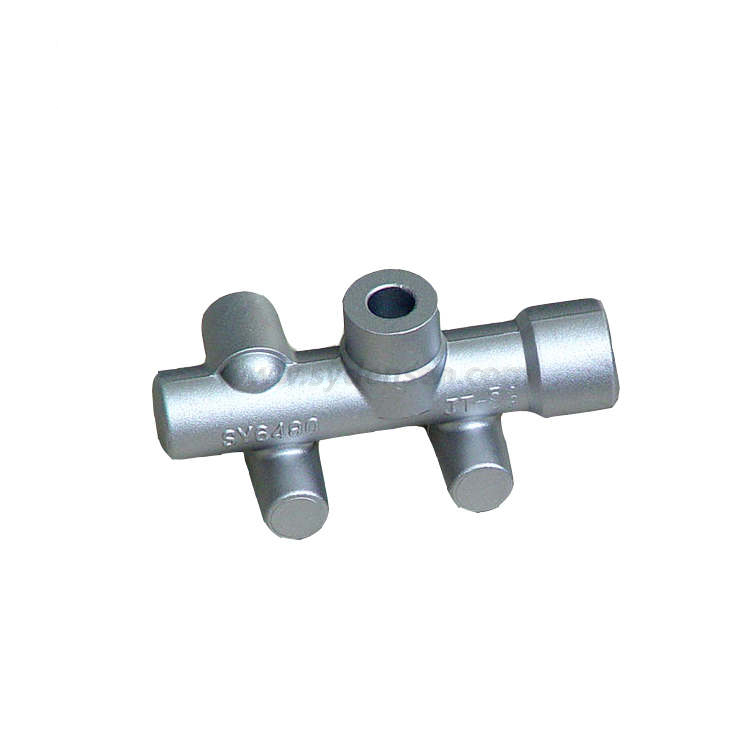Why Aluminum Casting Company is Key in the Automotive Sector
Aluminum Casting Explained: Key Facts and Insights for Market Professionals
Aluminum casting functions as an essential procedure in contemporary production, shaping elements throughout numerous industries. Its varied techniques, such as sand and die casting, cater to different manufacturing requirements. The special residential properties of aluminum alloys boost their applicability, yet tests remain in maintaining high quality and efficiency. Comprehending these elements is essential for sector specialists. What are the current developments and best techniques that can additionally maximize this process?
Introduction of Aluminum Casting Processes

Crucial element of aluminum casting processes consist of the preparation of mold and mildews, which may be made from sand, steel, or ceramic products, relying on the planned usage. Additionally, temperature control is critical to ensure correct melting and solidification of aluminum.
The casting process permits intricate layouts and can accomplish high levels of dimensional accuracy. As soon as cooled, the spreadings may go through finishing operations such as machining or surface treatment to satisfy certain efficiency standards. Overall, aluminum casting works as a versatile manufacturing method, effectively satisfying the varied needs of different markets.
Kinds Of Aluminum Casting Approaches
In the domain of aluminum casting, different techniques are utilized to attain various results. Sand casting methods give flexibility and cost-effectiveness for intricate shapes, while die casting procedures supply high precision and effectiveness for automation. Understanding these approaches is crucial for picking the suitable strategy based on task requirements.
Sand Casting Techniques
Sand casting techniques stand for a basic approach in aluminum casting, where sand is made use of as a mold and mildew material to form liquified metal. This procedure entails creating a pattern from the desired component, which is after that positioned in a sand mixture to develop a mold. The sand is compacted around the pattern, and after elimination, it creates a tooth cavity in the form of the component. Molten aluminum is put right into this cavity, permitting it to solidify and cool down. One considerable benefit of sand casting is its convenience; it can suit complicated shapes and big elements. Additionally, the products utilized are fairly inexpensive, making it an available alternative for different production applications in the aluminum market.
Die Casting Processes
Die casting procedures are a noticeable method for shaping aluminum elements, utilizing high-pressure techniques to require liquified metal into precisely engineered molds. This procedure is specifically favored for its capacity to generate complex forms with limited resistances and a smooth surface. There are 2 main kinds of die casting: warm chamber and chilly chamber. Hot chamber die casting appropriates for steels with reduced melting points, enabling faster manufacturing prices. On the other hand, chilly chamber die casting is ideal for higher melting factor metals, needing a separate melting heating system. Both approaches enhance efficiency and minimize product waste, making them essential in auto, aerospace, and customer products markets. Understanding these procedures assists professionals pick the most proper strategy for their particular applications.
Product Quality of Aluminum Alloys

Stamina and Resilience
Strength and longevity are critical characteristics of aluminum alloys that make them ideal for different casting applications. These products show a desirable strength-to-weight proportion, permitting the production of light-weight yet robust components. With regard to tensile toughness, specific aluminum alloys can be engineered to stand up to considerable lots without deforming. This residential property is particularly crucial in industries such as aerospace and auto, where efficiency and safety are critical. In addition, aluminum alloys often maintain their mechanical residential or commercial properties under diverse temperature level problems, making sure regular performance. The innate ductility of these alloys additionally permits for reliable shaping throughout the casting process, making it less complicated to create intricate geometries. In general, the toughness and durability of aluminum alloys add significantly to their prevalent usage in sophisticated applications.
Deterioration Resistance Characteristics
While aluminum alloys are prized for their stamina and light-weight buildings, their rust resistance is an additional crucial feature that boosts their viability for various applications. Aluminum naturally creates a safety oxide layer when subjected to wetness, which assists to stop additional oxidation. This inherent home makes aluminum alloys particularly beneficial in atmospheres susceptible to rust, such as industrial and marine settings. Furthermore, different alloy structures can influence resistance degrees, with certain alloys specifically crafted to improve this particular. Treatments like anodizing can further boost deterioration resistance by enlarging the oxide layer. Understanding the rust resistance of aluminum alloys is important for market professionals when picking products for projects needing longevity and long life in tough atmospheres.
Advantages of Aluminum Casting in Manufacturing
Aluminum casting deals many advantages in production, making it a preferred option for various sectors. One substantial advantage is its lightweight nature, which adds to lowered transport costs and enhanced power performance in output. Moreover, aluminum's outstanding thermal and electric conductivity boosts capability in applications calling for heat dissipation or electric conduction.
The material's capability to be cast into intricate forms permits style versatility, minimizing the requirement for additional machining procedures. In enhancement, aluminum casting exhibits remarkable deterioration resistance, resulting in longer item life-spans and reduced upkeep costs.

Common Applications of Aluminum Castings
The convenience of aluminum casting enables its extensive use throughout different sectors. Usual applications consist of automobile parts, where light-weight and corrosion-resistant components, such as engine blocks and transmission real estates, enhance lorry efficiency. In the aerospace field, aluminum spreadings are made use of for structural components, using toughness without including substantial weight.
Additionally, the electrical market benefits from aluminum castings in producing enclosures and warm sinks, where thermal conductivity is crucial. The durable goods field also includes aluminum spreadings in products like cooking equipment, furnishings, and attractive items, incorporating aesthetic appeals with performance.
The building sector uses aluminum castings for architectural elements, window frameworks, and fixtures, which supply longevity and design versatility. Overall, the diverse applications of aluminum castings emphasize their significance in modern-day manufacturing, contributing to advancements in efficiency and item layout across multiple areas.
Innovations and Technological Advancements
As Continued markets remain to evolve, advancements in aluminum casting technology are changing production procedures and item capacities. Advancements in 3D printing and additive manufacturing have made it possible for the development of intricate geometries that were formerly difficult to accomplish with traditional methods. These technologies allow for rapid prototyping, lowering preparations and costs.
Additionally, improvements in mold layout and products have actually improved the casting process by increasing effectiveness and minimizing waste. The combination of wise manufacturing strategies, such as go right here IoT devices and real-time information analytics, permits better tracking and optimization of manufacturing specifications, causing better results.
In addition, developments in aluminum alloys give improved toughness, deterioration resistance, and lightweight buildings, providing to the growing demands in aerospace and automotive industries. Jointly, these technologies are not just enhancing productivity but also fulfilling the extensive criteria of modern engineering applications.
Best Practices for Top Quality Control in Aluminum Casting
Guaranteeing premium outcomes in aluminum casting calls for adherence to ideal methods that incorporate different stages of the manufacturing process. Detailed product inspection is important to verify the high quality of aluminum alloys utilized, as impurities can significantly affect the last product. Implementing accurate melting and pouring techniques minimizes issues; maintaining ideal temperatures prevents oxidation and promotes harmony.
Mold and mildew style plays an important function; making use of computer-aided layout (CAD) can enhance precision and reduce human mistake. Routine surveillance of the cooling process is important to avoid bending and shrinking. Additionally, utilizing non-destructive testing approaches, such as ultrasonic or X-ray evaluations, aids recognize interior flaws without damaging the components.
Establishing a comments loophole with engineers and operators promotes constant renovation, ensuring that top quality control actions progress alongside technical developments. By adhering to these finest methods, manufacturers can improve the reliability and efficiency of aluminum spreadings.
Regularly Asked Questions
What Are the Environmental Impacts of Aluminum Casting?
The ecological effects of aluminum casting include substantial power usage, greenhouse gas emissions, and potential water air pollution from factory procedures. Additionally, bauxite mining for aluminum ore can bring about habitat damage and soil degradation.
How Does Aluminum Casting Compare to Other Metal Casting Processes?
Aluminum casting generally supplies advantages in light-weight elements and deterioration resistance compared to various other processes, such as iron or steel casting, which might supply better toughness yet cause heavier and less corrosion-resistant items. - Aluminum Casting Company
What Are Typical Flaws in Aluminum Castings and Their Reasons?
Common flaws in aluminum castings include porosity, shrinking, and incorporations. Reasons frequently originate from improper pouring strategies, inadequate mold and mildew style, or contamination of the liquified metal, influencing the end product's stability and efficiency.
What Safety Safety Measures Should Be Taken Throughout Aluminum Casting?
During aluminum casting, important security preventative measures consist of using safety equipment, making certain appropriate ventilation, keeping a tidy work space, dealing with molten metal with treatment, and adhering to well-known methods to decrease risks of burns, breathing risks, and mishaps.
Just How Can I Boost the Effectiveness of My Aluminum Casting Operations?
To improve effectiveness in aluminum casting procedures, one should enhance mold and mildew style, streamline product handling, employ automated processes, carry out normal maintenance on tools, and purchase employee training to boost abilities and efficiency.
Various techniques exist, aluminum casting encompasses several key procedures that provide to different applications and needs. Trick elements of aluminum casting processes consist of blog the preparation of molds, which may be made from sand, steel, or ceramic materials, depending on the planned use. Sand casting methods represent an essential technique in aluminum casting, where sand is utilized as a mold and mildew product to form liquified steel. As industries continue to advance, advancements in aluminum casting modern technology are changing production procedures and item abilities. Making certain high-grade outputs in aluminum casting calls for adherence to ideal methods that encompass different stages of the production procedure.